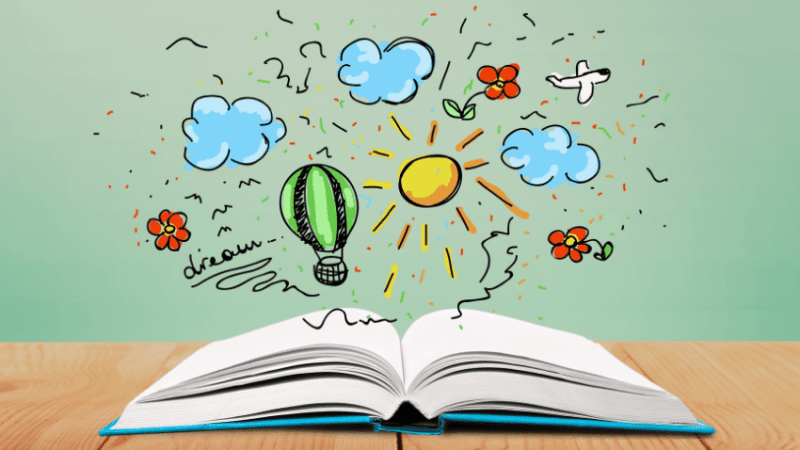Explore Books Through Drama To Turn Pupils Into Evacuees, Witnesses To A Crime Or Visitors To Narnia

“At the most extreme end of the spectrum, children can immerse themselves in the world of a story in a way they will never forget”

- by Tobias Bown

There’s an old adage that drama teachers are all failed actors, English teachers failed writers and teachers who run media clubs failed radio presenters.
As head of drama, a former head of English and the founding member of our school’s media club, this joke begins to wear a little thin. In reality, these experiences have proven to me the power of using drama and media strategies in the classroom to engage pupils with literature and bring texts to life.
These techniques can make a big difference to a child’s experience of a text, helping them to ‘enter the story’ and develop a more rounded understanding of the world in which the narrative inhabits, which in turn enhances the quality of their learning and enjoyment of literature.
Technology plays a growing role in our lives in the 21st century. Children are surrounded by new ways of accessing content and can often teach their teachers when it comes to the latest app or device. As a school, we study one set text per term and link all of our English objectives to the book, so have looked for ways to enhance our schemes of work with a merging of drama and media activities to capitalise on the children’s interests and experiences.
The aim is to develop literacy skills in a fun, dynamic and challenging way and to place an equal emphasis on analytical as well as creative English. This is really the next step from initiatives such as ‘Talk for Writing’ and ‘Drama for Writing’ which, for the last twenty years, have recognised that it is much easier to describe stepping out onto a snowy scene if you have actually had a go at it, or failing that (given how unreliable British weather is), used the power of your imagination to try it and then discuss the experience before putting pen to paper.
You can spot the difference yourself in any lesson if you compare the quality of the children’s work before and after they have had an opportunity to ‘live’ the experience you are trying to get them to think about.
At the most extreme end of the spectrum, children can immerse themselves in the world of a story in a way they will never forget. I remember a colleague telling me about a school she had worked in where the caretaker had been asked to dress up in shabby clothes and sit in the school’s old air-raid shelter that was now used as a store cupboard for PE equipment.
The teacher’s class had been studying Skellig by David Almond. If you know the novel, you may be able to guess what happened next when the class entered the pitch-dark room. The total silence was disrupted by the caretaker’s gruff voice, in role as the angel-like figure who is discovered by a boy in his garage in the book, asking, “What do you want?”
After the screams of shock had subsided, the children were encouraged to go into role and film themselves approaching this mysterious character with questions about his life, his motivations and his feelings, which would become part of the trailer they were making for the film.
I chuckle at the idea that at the end, the teacher beckoned the slightly shell-shocked children back into the classroom with a cry of, “Now go in and plan the rest of your trailer!”
A less terrifying version of this activity, and one which does not require you to cover yourself in cobwebs, is the classic ‘hot seat’. This can be given a 21st century twist if a media element is added to the drama.
Apps such as Tellagami allow you to animate a cartoon figure with your voice. Children can go into role and answer questions from others in character. Some work on Thief by Malorie Blackman, for example, involved children dreaming up journalistic questions to ask witnesses of a car accident that features in the novel.
It was clear the children understood the need to ask the right questions in order to achieve an eye-catching quote for the front page of their article. Combining drama and media does not need to be complicated. It can be as simple as learning about story sequencing by taking photographs of the key events and writing captions alongside each one to explain the action.
We tried this with frozen images of the plot of ‘The Knight’s Tale’ when studying Chaucer’s The Canterbury Tales and I was in no doubt that the experience had improved the children’s understanding of the story. Another of my favourite camera projects involves filming and then editing talking-head interviews with evacuees when studying Michelle Magorian’s Goodnight Mister Tom.
The children’s ability to empathise with the evacuee experience was very poignant and it certainly increased their understanding of the plight of the main character.
A useful teaching tip I picked up a while ago was ‘more of the children, more of the time’.
This mantra encourages the teacher to think about how the highest number of children can be involved in a learning activity for as much of the lesson as possible and is a good way of guarding against too much teacher-talk.
Drama and media activities increase participation and can also be used to promote collaboration, problem-solving and perseverance. If we can get children switched on to the delights of a text while we’re at it, then that’s even better.
At my school, the culmination of English for Y6 is an in-depth study of Romeo and Juliet in the summer term. We bring the children out onto the grass and use drama and media tools to wander the streets of Verona, witness Mercutio’s epic death, quiz the friar on whether he is to blame and debate if the protagonists’ fate could have been avoided. I am in no doubt that the children’s experience of the play is far richer as a result and this pays dividends in their analysis, understanding and creative responses.
Although the play was written over 400 years ago, a combination of drama and media brings it right up to date and offers a range of new ways to explore the story. This helps us achieve one part of our ultimate mission as English teachers: to enable children to find their own ways to explore and engage with literature in the 21st century.
How to use media to inspire learning
Trying to find a fun way into poetry? Ask the children to write a rap and edit their efforts into a music video. This worked well for my school with characters from Eva Ibbotson’s The Secret of Platform 13.
Struggling to make Shakespeare relevant? Take photographs of dramatic moments in the play and use them as part of a gossip magazine article – try it with the Capulet ball in Romeo and Juliet.
Improve the quality of descriptive writing by explaining to the children that you will film them as they imagine stepping into a magical world on the other side of a door. Offer them one or two props to get them started once they enter and play some atmospheric music or sound effects to make the experience even more realistic. Stop them after a minute or so and ask them what they have sensed (sight, sound, taste, smell, touch). A great text to start with is The Lion, The Witch and the Wardrobe.
Tobias Bown is assistant academic head and head of drama at The Perse Prep School in Cambridge.










